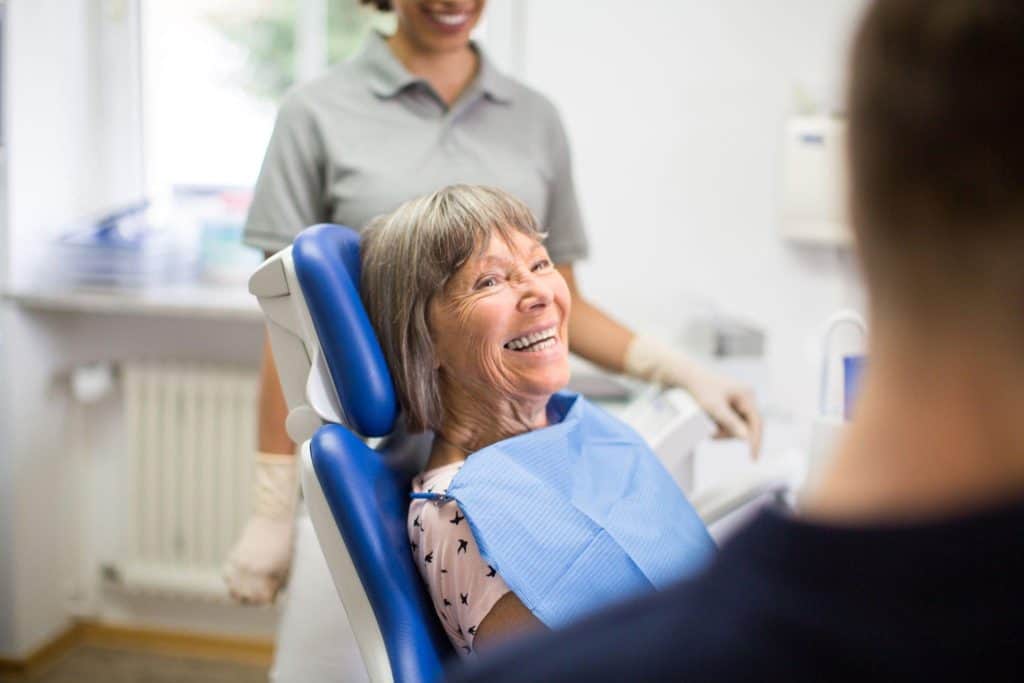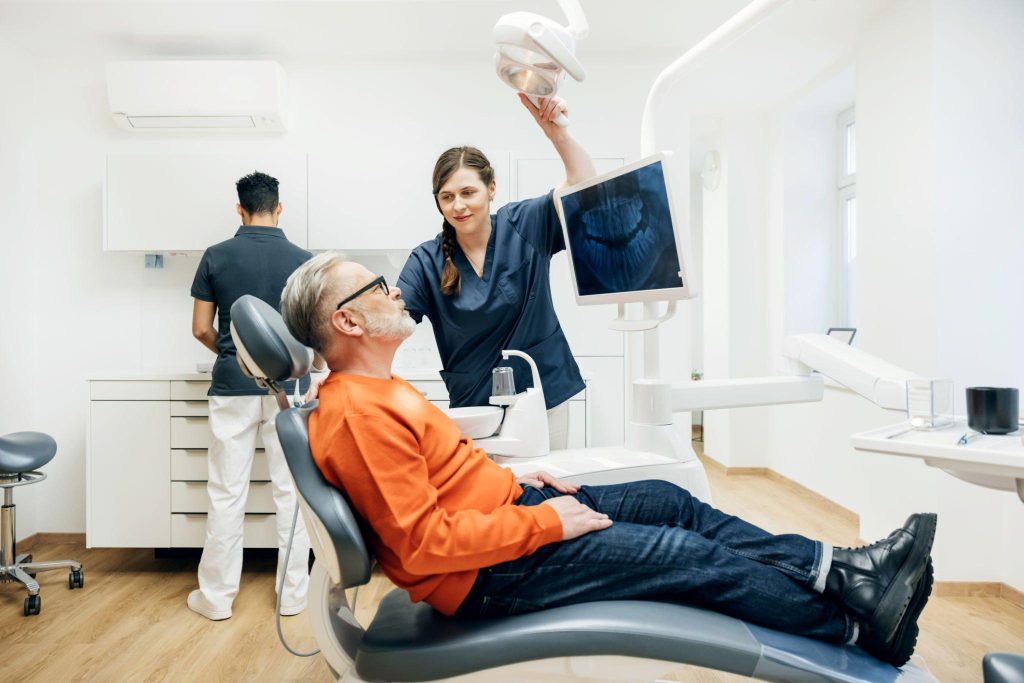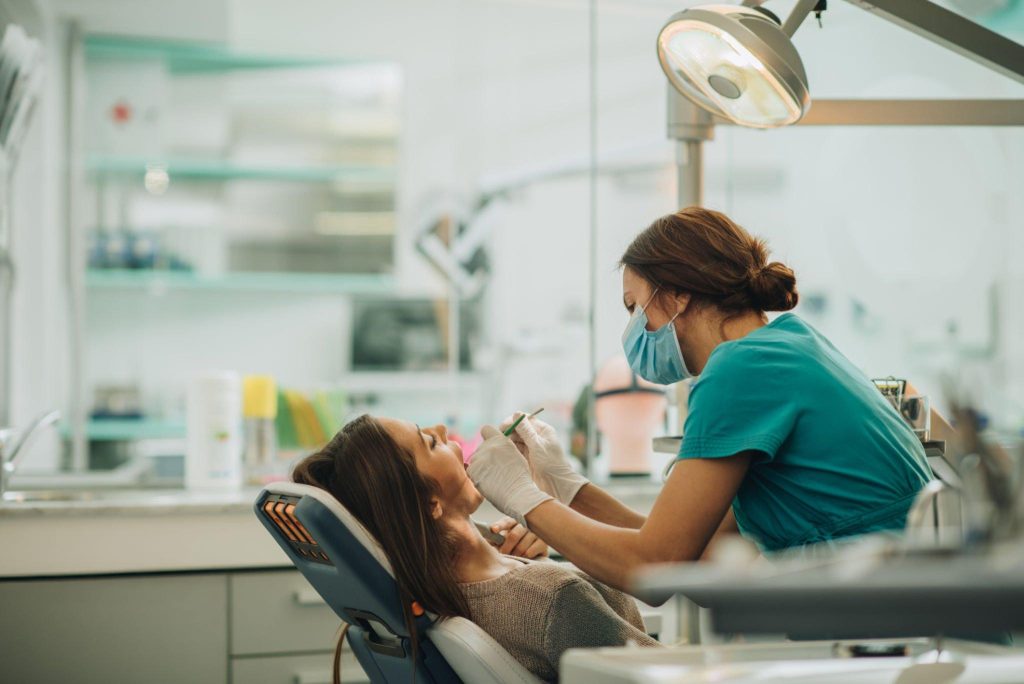Oral fluid diagnostics is revolutionizing dental care by offering non-invasive, real-time assessment of oral health. Research by DaSilva et al. (2022) and others has highlighted the potential of oral fluid diagnostics in various diseases and clinical situations.
This article explores how this innovative approach is transforming dental research and practice.

The Emergence of Oral Fluid Diagnostics
Advancing Beyond Traditional Methods
Oral fluid diagnostics, primarily through saliva analysis, is emerging as a key player in dental diagnostics, offering a non-invasive alternative to traditional methods.
Key Advantages:
- Non-Invasive Sampling: Easier and less stressful for patients compared to blood tests.
- Real-Time Monitoring: Quick results enabling timely intervention (Mandel, 1993).

Impact on Dental Disease Diagnosis and Management
Enhancing Detection and Treatment
Oral fluid diagnostics is particularly effective in detecting periodontal diseases and dental peri-implant diseases, aiding in early diagnosis and treatment planning.
Diagnostic Applications:
- Periodontal Disease Detection: Quantitative tests for active matrix metalloproteinase-8 (aMMP-8) identifying periodontal inflammation (Sorsa et al., 2017).
- Peri-Implantitis Monitoring: Accurate identification of peri-implantitis, improving patient outcomes.
Oral Fluid Diagnostics in Periodontal Care
A Tool for Personalized Dental Care
In periodontal care, oral fluid diagnostics is enhancing personalized treatment approaches, providing specific data tailored to individual patient needs.
Benefits in Periodontal Care:
- Targeted Treatment Plans: Customized care based on specific biomarkers.
- Ongoing Monitoring: Regular checks to assess treatment effectiveness.

Integration with Digital Dentistry
Leveraging Technology for Better Care
The integration of oral fluid diagnostics with digital dentistry tools like ICT and wearables is further enhancing patient care.
Technological Synergy:
- Digital Data Analysis: Using ICT for detailed analysis of diagnostic data.
- Wearable Technology: Continuous monitoring of oral health parameters.
Challenges and Future Directions
Navigating the Path Ahead
While oral fluid diagnostics offers numerous benefits, challenges such as standardization of tests and integration with traditional dental practice need to be addressed.
Overcoming Challenges:
- Standardization of Diagnostic Protocols: Developing uniform testing methods.
- Integration into Dental Practices: Seamlessly incorporating diagnostics into existing workflows.

The Future of Oral Fluid Diagnostics in Dentistry
Anticipating Further Innovations
The future of oral fluid diagnostics is promising, with potential advancements in technology and broader applications in dental care.
Future Prospects:
- Advanced Biomarker Discovery: Identifying new biomarkers for early disease detection.
- Wider Clinical Applications: Expanding the use of diagnostics in various dental specialties.
Conclusion
Oral fluid diagnostics represents a significant advancement in dental care, offering non-invasive, efficient, and accurate assessments of oral health. As technology continues to evolve, this approach is set to become a staple in modern dental practices, improving patient experiences and treatment outcomes.
In Los Algodones, dental clinics like Los Algodones Dentists Guide are embracing these advancements. Los Algodones Dentists Guide offers a range of dental services, incorporating the latest innovations like oral fluid diagnostics to provide superior care to its patients.
For more information about their services and how they incorporate these cutting-edge technologies, visit Los Algodones Dentists Guide
